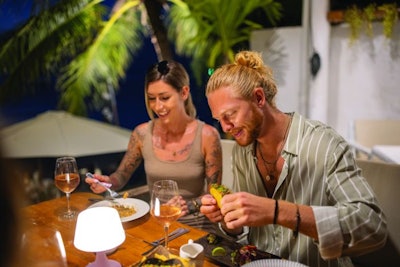
Chicken meat production in Thailand is forecast to grow by 3% this year, improving on the 2% expansion thought to have occurred in 2022 but still below the 5-8% trend achieved annually prior to the pandemic.
An upswing in demand for Thai products is, nevertheless, occurring with both home and overseas markets looking to consume more.
In 2022, the home market absorbed 2% more locally produced chicken meat, while in export markets, demand was up by 3% to stand at 935,000 metric tons (MT), according to data published by the U.S. Department of Agriculture Foreign Agricultural Service in late September last year.
Over the first six months of last year, production rose by 1% in response to this gradually strengthening demand.
High costs to continue
2022 saw Thai producers facing higher input costs. Prices for day-old chicks, for example, rose by 60% over the first six months of the year. Higher chick prices, together with higher feed prices – the cost of feed grains rose by 26% over the first seven months – saw the cost of broiler production rise by 27% over the first seven months of the year.
Tight supplies of grandparent and parent stocks are expected to keep chick prices high until the middle of this year. With grain prices also forecast to remain elevated, integrated producers remain cautious in expanding production despite strengthening market conditions.
Inflation and difficulties in the swine sector have been among factors helping to grow domestic demand for chicken meat in Thailand, along with the gradual return of tourism. Twenty million foreign tourists are expected to visit the country this year. While an improvement on last year, the number remains far below the record 40 million that visited the country in 2019.
Higher input prices have translated into Thai products becoming more expensive. For example, the price of boneless breast meat rose by 45% over the first eight months of 2022, while that of leg quarters was up by 26%.
Exports growing
Chicken meat exports are forecast to rise by 4% this year. During the second half of 2022, demand from neighboring countries strengthened, particularly following Malaysia’s ban on the export of cooked and uncooked chicken meat.
Cooked chicken meat exports have fared better than those of uncooked and salted exports, accounting for 65% of chicken meat sold overseas during 2022. Demand increased particularly from Japan and the U.K.
Importantly for the Thai industry, Saudi Arabia restarted imports of Thai chicken last year. Following an absence from the Saudi market of 18 years, Thailand’s exports to Saudi Arabia are thought to have reached 6,000 MT last year and are forecast to grow to 60,000 MT over the next five years.
The country is also benefitting from China having approved five more export facilities last year.
However, while exports may be growing, the increase remains below the average increase recorded over the five years prior to the pandemic of 10%.

CP gains more certification
Thailand’s leading broiler producer Charoen Pokphand Foods (CP) has become the first Thai company to achieve the U.K.’s Farm F1st certification for its chicken production process. The Farm F1st assurance scheme is a new, global certification scheme designed to deliver safe and secure food chains with a commitment to animal, bird and worker welfare.
The certification comes on top of a number of other accreditations that Asia’s third-largest broiler producer CP has achieved. These include Global Gap, an internationally recognized standard for farm production, and Raised Without Antibiotics, which assures consumers that animal products are raised without the use of antibiotics.
Achieving these certifications is part of CP’s ongoing program to improve the rearing environment for all of its broiler production, both in Thailand and overseas.

















